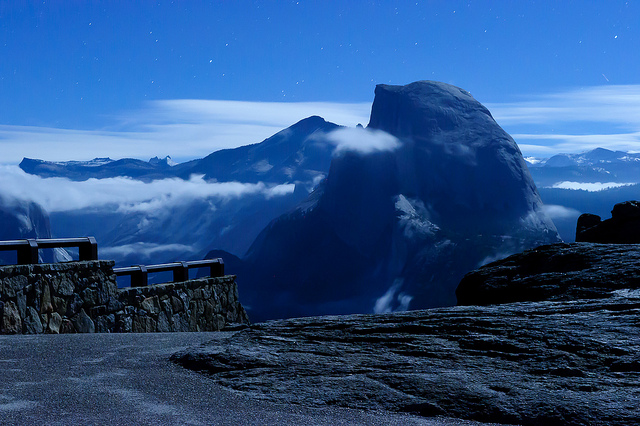
California has long been seen as a beautiful land of opportunity—a place where the sun is always shining and anything is possible. For many generations, people have flocked here to make it big—to mine for gold, drill for oil, find fame in Hollywood, and become dot.com millionaires. But 21st-century Californians look very different from previous generations of Californians—and life in today’s California offers different stumbling blocks and different prospects for success. What are the hopes and dreams of Californians in 2015? How do they differ from those of their parents and grandparents?
In advance of the Zócalo event “What is the California Dream Now?,” we asked that very question to people who study, live, and work around the state.

My Pasadena house was built in 1956, nine years before I was born, on then-new streets carved into the low granite mountains of the former Rancho San Rafael. My 90-ish-year-old neighbors on either side are the original owners of their homes.
Back then, my neighborhood grew from the bounty of California’s post-World War II government-driven expansion. Now, it exemplifies California in the age of privatization.
In the 1950s and ’60s, big public investments fueled big growth in private industry, which generated tax revenues to continue this Keynesian cycle.
My neighbors worked their way up in industrial companies that grew rapidly during their careers. Some were not yet 30 when they bought their houses. Their kids walked to the neighborhood school, where they played pickup basketball on weekends.
L.A. was pretty similar for the middle and upper-middle classes. Some houses were grander, some cars were faster. But an average public school wasn’t much worse than one in a tony area. Upward mobility was almost a sure thing.
I was in my 40s when we finally saved enough to buy our house. Maybe we could have bought it sooner if we hadn’t spent so much in school tuition. My kid rides with a bus full of Pasadena kids to a private school in Los Angeles instead of attending the local school with kids mostly bussed in from lower-income Pasadena neighborhoods.
Those of us who live here now lucked out by beating the odds.
The dream is no longer to keep up with everyone else; it’s to be able to buy a way out of what others have to put up with. When dreams can’t be shared, it’s time for society to wake up.
Peter Hong is a Los Angeles writer. He spent 20 years as a staff writer for the Los Angeles Times, the Washington Post, and Business Week.

The California dream has been a reality for many thousands of people. Starting with the Gold Rush, they moved to the Golden State to make good, leaving old countries and states, old jobs, and old lives behind. As a result, California is one of the most ethnically diverse places on the planet and, in the last 20 years, has experienced less inter-ethnic conflict than many other states.
But the California dream has also been a myth, especially in recent years. The state delivered on its promise, particularly in the postwar period, thanks to its abundance of union-wage jobs in aerospace, auto assembly, food processing, and other types of manufacturing employment. As those industries have faded or disappeared, the new glamour industry, high-tech, has been resolutely closed to union organization. This has had profound consequences when it comes to the distribution of wealth.
People with sophisticated knowledge and superior education have done very well, while those without have struggled with soaring housing prices and inadequate incomes. Today, many Californians cannot even afford to live in their own hometowns. California’s K-12 schools are no longer the envy of the nation as they were in the recent past. And the state’s investment in higher education has dwindled, thereby saddling many young people with crippling debt.
Yet the picture in California does not merit an entirely sour note. The state has pioneered progressive legislation to protect the environment, and has been at the forefront of social change with respect to gay and lesbian rights. Creative juices flow freely here, from indie filmmakers to software developers to surfing innovators. If the state can once more manifest the political will to invest generously in its public educational system, from preschool through college, then perhaps the California dream can be reborn.
Glenna Matthews is an independent scholar living in Laguna Beach. Among her six books is Silicon Valley, Women, and the California Dream. She has also published eight articles about the Valley in historical journals.
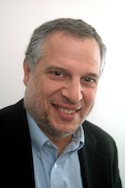
President Obama’s executive actions on immigration last year had the most direct impact in California, the state with the largest Latino and Asian-American populations. While these decisions set off harsh debates in the halls of Congress, they have been used here as bricks in the foundation of the new California dream.
Now we are talking about how to retool higher education to accommodate a changing demographic; how to issue drivers’ licenses to undocumented residents; how to ensure health care coverage for citizens and non-citizens alike. We are advancing a California dream—the steady and perhaps irreversible incorporation of millions of immigrants and children of immigrants into our civic and community lives.
How did this happen? How did a dream that once seemed impossible start to open up to an immigrant-origin population so reviled in 1994 when Proposition 187 passed? The shift began in the wake of Prop 187, when people began to vote who had not previously voted, or became citizens in order to vote. Their votes helped change the politics of California to become less hostile to immigrant communities—and then downright positive to them. And as immigration levels declined, those who were already here put down deeper roots, according to research by USC demographer Dowell Myers and his colleagues.
Today, it is the immigrants, their families, and their communities who are repeating the California dream. This is how it has always been as those on the margins struggle uphill to find their way to the center and—once there—refresh the wider community.
Raphael J. Sonenshein is executive director of the Pat Brown Institute for Public Affairs at Cal State L.A. He is the author of three books on Los Angeles politics and government.
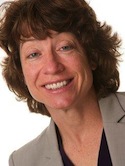
In a 1977 essay called “Holy Water,” Joan Didion described her uniquely Californian dream of controlling the State Water Project for a day—a dream born of her “excessive” reverence for water. “Not many people I know carry their end of the conversation when I want to talk about water deliveries,” she wrote, “even when I stress that these deliveries affect their lives, indirectly, every day.”
For the sake of everyone’s California dreams, it’s time for some Didionesque reverence for water—and some reckoning.
The State Water Project is the largest network of dams and canals built and operated by a state. Today, its deliveries of water from Northern California support the jobs, neighborhoods, and ambitions of millions of people.
But backers of the State Water Project and its federal counterpart, the Central Valley Project, did not foresee the extent to which their projects would be asked to sustain the Central Valley’s natural heritage.
Native wildlife—barely considered when California water development began a century ago—now has a share of water deliveries. Federal and state reservoirs routinely store deep water to keep salmon eggs downstream cool, because the higher-elevation streams where the salmon evolved are blocked by dams.
A correction has been made, and conflict ensues. We now ask more of our water projects than they can deliver. Balancing demands requires what some call “reconciliation”—finding a way to maintain a diverse range of healthy ecosystems in conjunction with our vast water development.
That’s hard work. It requires planning, investment, and compromise. But if the reckoning inspires wise use of water and a certain measure of reverence, our highly water-dependent California dreams are still within reach.
Nancy Vogel is the director of public affairs at the California Department of Water Resources.
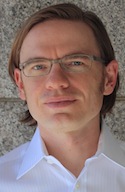
As a colloquial phrase, the “California Dream” dates to the rush years of post-World War II suburban growth. Although it functioned as a developers’ slogan, it faithfully captured the mood of millions of Americans who migrated to the West Coast for good employment in a gorgeous setting with great weather.
The dream became reality. On New Year’s Eve, 1962, Governor Pat Brown celebrated “Population Day” to mark the symbolic moment when the Golden State overtook the Empire State as the nation’s most populous.
Regrettably, the business of growth was not balanced by the practice of rootedness. Twentieth-century California society was the antithesis of a leathery sapling of coast live oak—a slow-growing native species adapted to fire and drought. Instead it was a showy, full-grown Canary Island date palm trucked in and replanted on newly turfed property, sprinkler system included.
In 2015, California’s palmy dreamscape still attracts tourists in force, yet it no longer exerts a magnetic pull on prospective residents from other U.S. states. Since 1992, California has been a net push-out state: Out-migration has exceeded domestic in-migration in all but two years.
A slowdown is a good time to breathe deeply and reconsider old patterns. For example, Californians know that freeways are not free; they have endless external costs. If the Lone Star State wants to one-up postwar California in developing environmentally profligate car-based megaburbs, let Texas frack Texas.
California dreaming in our time of climate change and diminishing water may seem pathetically humble. But humility can be transformative. It is humble to imagine the once-forsaken Los Angeles River returning as a center of civic life, or the once-polluted San Francisco Bay returning as a local food source. And it is humble to imagine the fields and orchards of the Central Valley producing social justice and environmental sustainability along with copious almonds for China.
Jared Farmer is the author of Trees in Paradise: A California History.
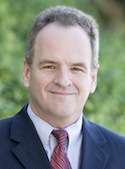
The California dream is, and has always been, about the ability for everyone here to fully realize their potential and pursue happiness in a land of unsurpassed beauty and opportunity.
Unfortunately, for many Californians this dream is out of reach, evidenced by the nation’s highest poverty rate, underperforming schools, and a flight of middle-class jobs. To revive the California dream, we must hold fast to three simple words: Empower the individual.
Look into the eyes of an elementary school student: You will see the promise of tomorrow. Does that student possess the initiative, knowledge, and skills to succeed in our global marketplace?
Witness the countless sacrifices of an entrepreneur to create better products and services, and a better life for families and communities. Can existing businesses expand and create more jobs and opportunity for our growing state?
Consider the most vulnerable among us: our foster children, our disabled and infirm, our elderly, and those living in poverty. Do they dare hope to realize their vision of the California dream?
These questions must occupy our thoughts, and compel us to action.
We must insist upon transparent, accountable government that serves citizens rather than the appetite and needs of government itself; that is a proper steward of every tax dollar; and that provides essential services and a sufficient safety net to those in genuine need.
To foster a modern 21st-century economy that steadily expands the middle class, we must reform our regulatory and legal systems to reduce barriers to new technologies and support the creation of innovative small businesses.
And we must transform our institutions of learning to use technology and become more responsive to the needs of individual students, their learning styles, and their unique abilities and ambitions. By empowering individuals, and preparing every student for the opportunities of tomorrow, we can work to realize the California dream.
Dr. Sam Blakeslee is a former California state senator and the founding director of the Institute for Advanced Technology and Public Policy at Cal Poly, San Luis Obispo.

The California dream’s uniqueness stems from the state’s unique diversity and the opportunities that it creates. California is the first place in human history where such a diverse population has been brought together as equals.
There was plenty of cultural diversity in the Roman Empire, but if you weren’t a citizen, the only other options were slave or barbarian—neither of which was the most bitchin’ place to be on the Pax Romana food chain.
Some 300 languages and dialects are spoken in the Golden State, according to the University of California. Elk Grove, a suburban city near Sacramento, reports that more than 60 languages are spoken in its public schools. The manager of the Wilshire branch of the Los Angeles Public Library system tells me she serves the largest community of Manchurians outside of Manchuria.
And, as of last year, California gained a Latino plurality.
So what’s the California Dream now? It’s everything a Google search and popular mythology say it is—and then some. California is E Pluribus Unum.
And it has been from the start. After gold was discovered in the California territory 166 years ago, immigrants came here from everywhere. The non-native population soared exponentially. Today’s new arrivals come for the same reason those 49ers did: Opportunity. There are no castes here, de facto or formalized.
Two kids with an idea for an X Games gizmo can create a prototype on the Sacramento Public Library’s 3-D printer and become millionaires. Just like a failed miner turned haberdasher took a fistful of grommets and created the preferred trouser of hardscrabble miners. Or a lanky cartoonist from Chicago revolutionized animation. Apple. McDonald’s. There’s a reason more than half the venture capital in the country comes here.
Information—increasingly accessible to increasingly more people—expands opportunities for innovation. Combine that with a population whose perspectives and passions circle the globe, and the dream is more vibrant than ever.
Greg Lucas was appointed by Governor Jerry Brown in March as California’s 25th state librarian.



